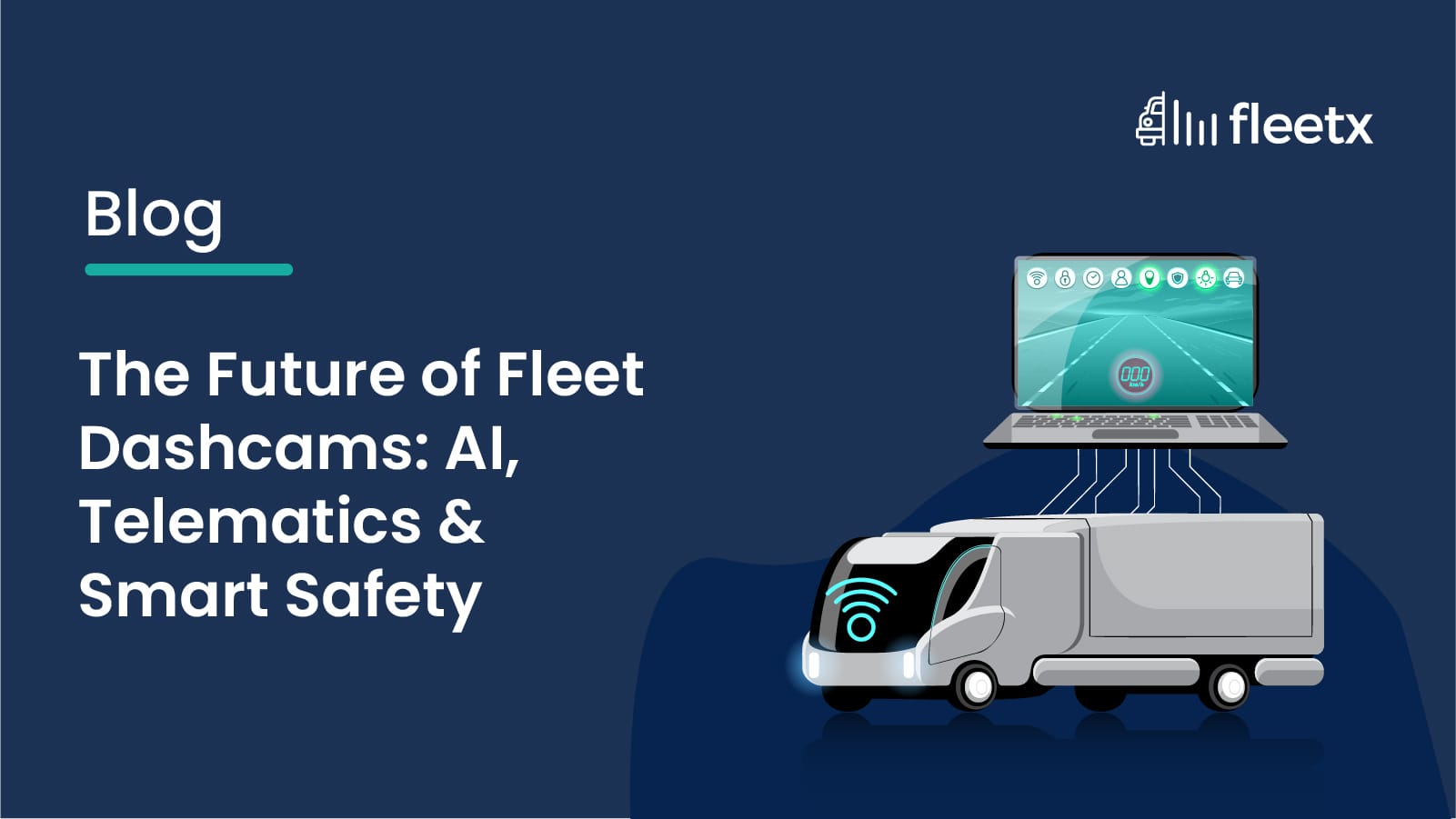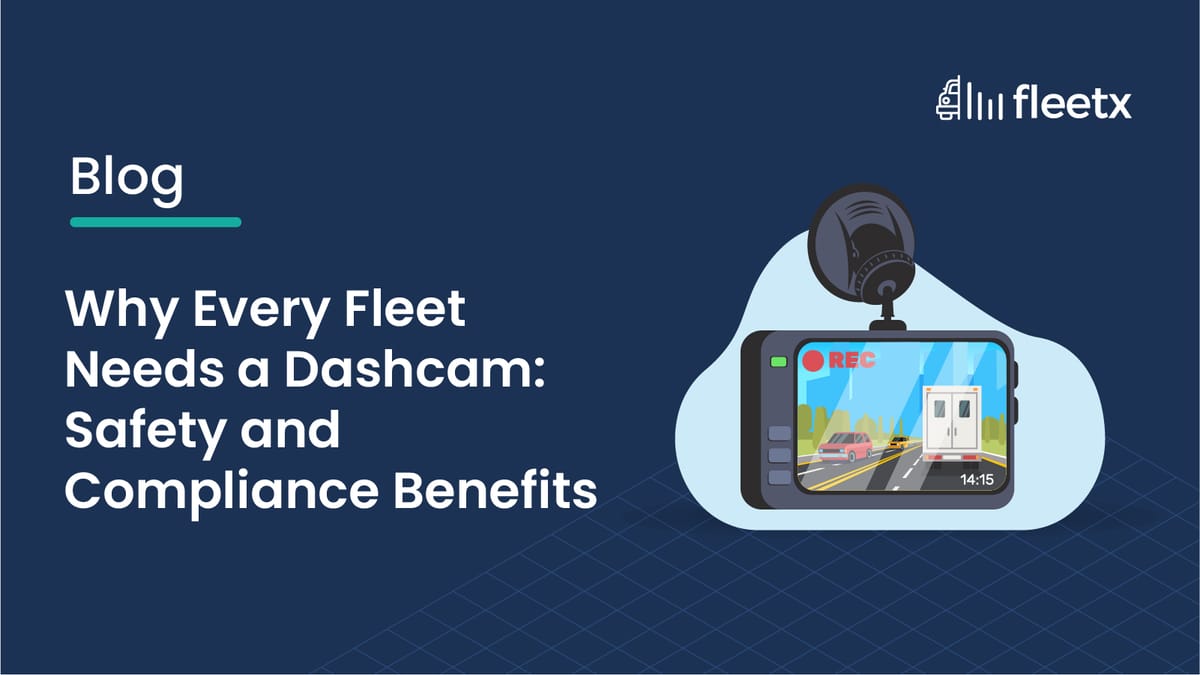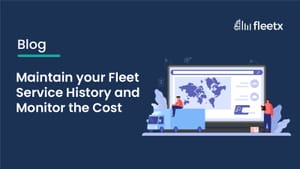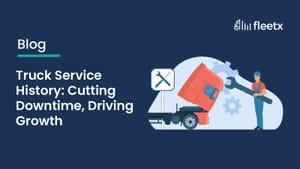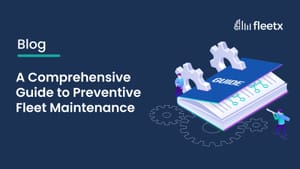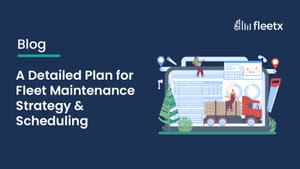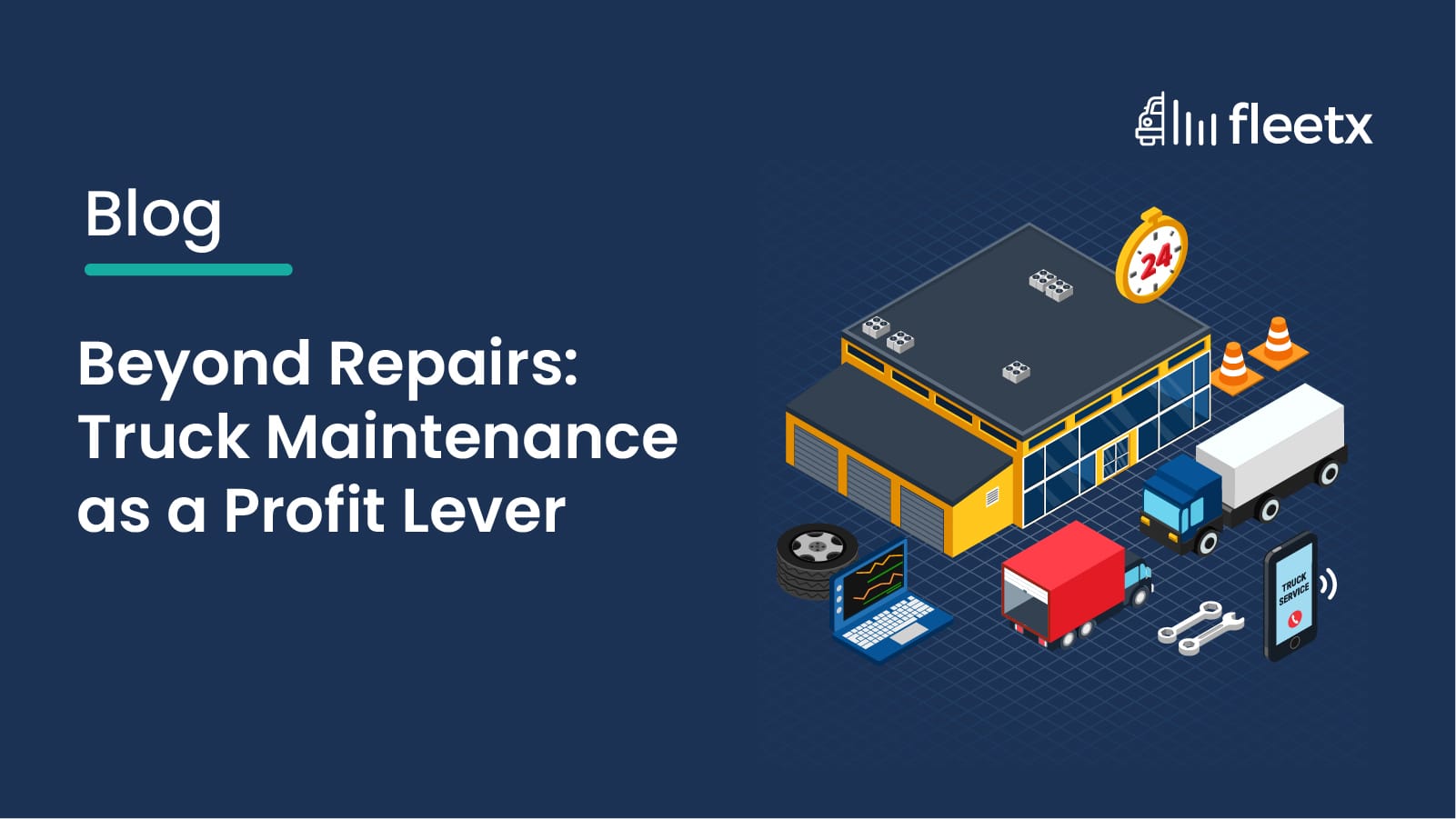
Truck maintenance has traditionally been viewed as a cost overhead - an unavoidable reality rather than an opportunity. But with modern logistics pressures, it’s no longer just about keeping vehicles running but about turning routine service into a strategic profit engine. Smart maintenance reduces disruptions, extends asset life, boosts resale value, and empowers operations to scale efficiently.
Business Costs of Fleet Downtime
- Lost revenue – Idle trucks can’t deliver, turning paying jobs into missed opportunities.
- Idle resource costs – Drivers, warehouses, and admin still incur costs while trucks wait.
- Emergency repair premiums – Reactive breakdowns lead to rushed servicing at higher rates.
- Client trust erosion – Delays and breakdowns undermine reputation and renewals.
Role of AI in Fleet Utilization and Life of Assets
AI transforms maintenance from reactive to predictive. By analyzing telematics data - engine diagnostics, fuel patterns, driver behavior - AI forecasts failures before they escalate. That means maximized uptime, longer asset life, lower repair costs, and maintenance tuned to real usage rather than generic schedules.
Factors Impacting Maintenance Cost Optimization
1. Fuel Management
- Bad fuel practices increase servicing frequencyBenefit: A fuel monitoring system detects impurities and pilferage, reducing engine clogging and filter replacements. Operators cut recurring repair costs while ensuring fuel efficiency.
2. Tyre & Brake Wear
- Tyre replacement cycle as a cost centerBenefit: Telematics tracking tyre pressure and brake health prevents premature wear, saving 15% on replacement costs annually.
3. Driver Behaviour
- Harsh braking, speeding, and idling cause higher wear and tearBenefit: Driver coaching programmes built on telematics insights reduce 10% annual maintenance spend.
4. Service Scheduling
- Missed preventive maintenance results in costly breakdownsBenefit: Automated service reminders reduce downtime by 20%, ensuring trucks are road-ready at all times.
5. Parts & Inventory
- Unplanned part shortages increase downtime lossesBenefit: Predictive stocking of critical spares cuts average downtime by several hours per vehicle annually.
6. Breakdown Repairs vs Predictive Repairs
Benefit: Predictive analytics helps avoid catastrophic engine failures that would otherwise ground vehicles for weeks.
7. Compliance & Penalties
- Non-compliance leads to forced repairs & finesBenefit: Digital compliance tracking ensures vehicles meet inspection and emission standards, reducing unexpected repair bills from failed checks.
8. Lifecycle & Replacement Strategy
- Old fleets incur higher recurring maintenanceBenefit: Strategic fleet replacement after 6 years reduces total cost of ownership by lowering repair frequency and boosting fuel efficiency.
Top 5 Benefits of Predictive Maintenance
- Cut maintenance costs - Nipping issues early before they escalate.
- Maximize uptime - Keeping trucks revenue-active rather than stuck in the shop.
- Extend asset lifecycles - Deferring expensive replacements.
- Enhance safety and compliance - Keeping vehicles road-ready and audit-safe.
- Enable budget predictability - With data-backed maintenance schedules.
Steps to Follow While Implementing AI-Powered Fleet Maintenance Software
- Audit Existing Maintenance Data – Understand current costs - parts, downtime, and manual processes.
- Install Telematics and IoT – Gather real-time data on engine health, fuel use, and driver behavior.
- Define Goals and KPIs – Set targets like % downtime reduction, % maintenance cost savings.
- Pilot Rollout – Start with a subset of trucks to refine AI models before full deployment.
- Train Teams & Drivers – Ensure smooth adoption via training, dashboards, and behavior rewards.
- Iterate Continuously – Use AI feedback to refine schedules, stock, and coaching for better ROI.
How Does Fleetx Leverage AI to Transform the Traditional Fleet Maintenance Landscape
Fleetx converts maintenance into a profit lever using its AI-powered platform, tailored for Indian trucking. The Service History module consolidates all maintenance data, including third-party work, in one place. Features include:
- Unified digital records: Every service, repair, and inspection - logged centrally for clarity and audit readiness.
- IoT alerts and triggers: Sensor-based fault codes generate proactive alerts instead of reactive measures.
- Automated service workflows: Work orders and reminders are auto-generated, ensuring no maintenance slips through the cracks.
- Inventory foresight: Smart stocking avoids part shortages, reducing time off-road.
- Behavioral intelligence: AI identifies wear patterns tied to driver behavior - enabling targeted coaching to reduce wear-related costs.
Overall, Fleetx builds a maintenance intelligence layer - not just logs - driving uptime, lowering costs, and turning maintenance into ROI.
Maintenance Reimagined as a Profit Strategy
Maintenance isn’t a drain - it’s a strategic advantage when done smartly. With AI, predictive insights, and platforms like Fleetx, maintenance becomes a core driver of profitability - cutting costs, preserving assets, and keeping trucks working harder longer. Treat it as a growth aid, not a checkbox, and your fleet will reap the benefits of uptime, savings, and stronger margins.
FAQs
Why should trucking businesses treat maintenance as a profit strategy instead of a cost overhead?
Because smart maintenance reduces downtime, extends truck lifespan, boosts resale value, and protects client trust. When managed with AI and predictive tools, it shifts from being just an expense to a lever for efficiency and profitability.
How does AI help in cutting fleet maintenance costs?
AI analyzes telematics data - like fuel usage, engine diagnostics, and driver behavior and predicts failures before they happen. This prevents costly breakdowns, minimizes downtime, optimizes parts usage, and aligns servicing with actual truck usage rather than generic schedules.
What are the biggest factors that drive up fleet maintenance expenses?
Key cost drivers include poor fuel quality, tyre and brake wear, reckless driver behavior, missed service schedules, lack of spare parts, reliance on breakdown repairs, non-compliance penalties, and aging fleets. Each of these can be mitigated with AI-driven monitoring and predictive tools.
How does Fleetx transform traditional truck maintenance practices?
Fleetx centralizes service history, uses IoT-based alerts for proactive repairs, automates service workflows, predicts spare part requirements, and links driver behavior to wear patterns. This creates a “maintenance intelligence layer” that maximizes uptime, lowers costs, and helps fleets scale profitably.

